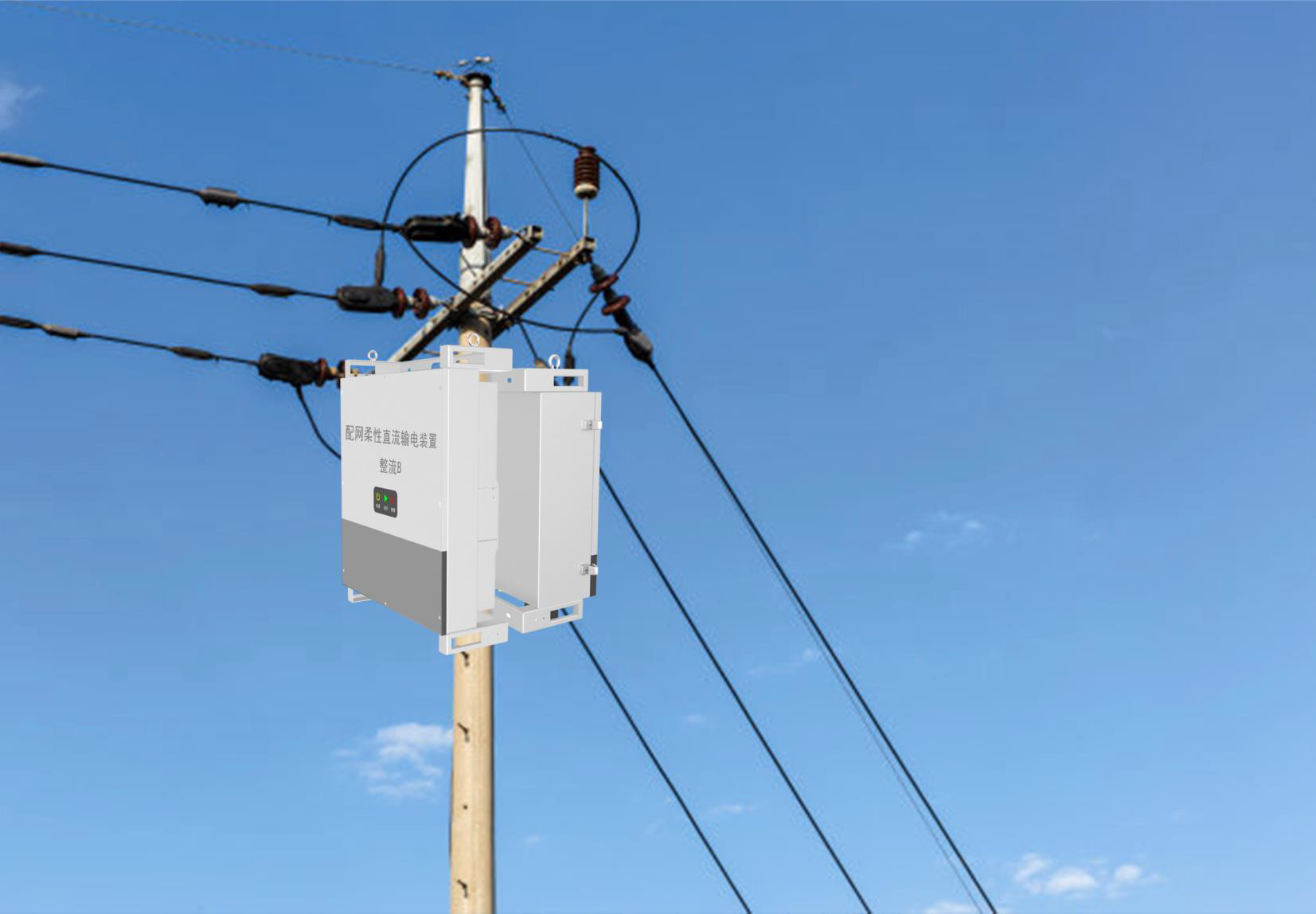Flexible DC Power Distribution Device: Revolutionizing Power Use

You are about to delve into the realm of flexible DC devices, a revolutionary development in power transmission and distribution engineering. These devices, such as the Low Voltage Regulator and Flexible DC Power Distribution Device, provide substantial benefits over conventional systems. By utilizing switching power technology, they enhance reliability and flexibility while eliminating mechanical wear. Their swift response time ensures enhanced transient stability. With the ability to adjust parameters continuously, these devices allow for quick and smooth changes in power flow. This innovation not only increases the transmission capacity of existing power grids but also helps prevent power outages following accidents.
Advantages of Flexible DC Devices
Improved Reliability
Enhanced System Stability
You will find that flexible DC devices significantly enhance system stability. By utilizing switching power technology, these devices eliminate mechanical wear, which greatly improves reliability. The absence of mechanical components means fewer failures and a more stable power system. This technology ensures that your power system remains robust and dependable, even under challenging conditions.
Reduced Downtime
Flexible DC devices also reduce downtime. With their advanced design, these devices can quickly adapt to changes in the power grid, minimizing interruptions. You benefit from a continuous power supply, as these devices swiftly address any issues that arise. This capability ensures that your operations run smoothly without unexpected disruptions.
Fast Response Time
Quick Adaptation to Load Changes
The fast response time of flexible DC devices allows for quick adaptation to load changes. When the demand for power fluctuates, these devices adjust rapidly to maintain a stable supply. You will notice that this quick adaptation prevents overloads and ensures that your power system operates efficiently. The ability to respond swiftly to load changes is a key advantage of flexible DC technology.
Efficient Fault Management
Efficient fault management is another benefit you will experience with flexible DC devices. These devices use high-frequency PWM technology and advanced control algorithms to detect and address faults promptly. By managing faults efficiently, they prevent potential damage to the power system and ensure that you have a reliable power supply at all times.
Enhanced Power Flow Control
Optimized Energy Distribution
Flexible DC devices optimize energy distribution across the power grid. By allowing for smooth and continuous adjustments in power flow, these devices ensure that energy is distributed efficiently. You will see improved transmission capacity and reduced energy losses, which contribute to a more effective power system. This optimization helps in meeting the growing demand for electricity without overloading the grid.
Better Voltage Regulation
With better voltage regulation, flexible DC devices maintain a stable output voltage despite variations in input voltage or load conditions. You will appreciate the consistent power quality that these devices provide, which is crucial for the proper functioning of electronic devices. By ensuring stable voltage levels, flexible DC devices protect your equipment and enhance the overall performance of the power system.
Technical Aspects of Flexible DC Devices
Key Technology
IGBT (Insulated Gate Bipolar Transistor)
You will find that the Insulated Gate Bipolar Transistor (IGBT) plays a crucial role in flexible DC devices. This component combines high input impedance with high-speed operation, making it essential for power products. IGBTs offer excellent thermal stability, allowing them to handle high voltage and current efficiently. By using IGBTs, you ensure that your power system remains robust and reliable, even under demanding conditions.
DSP+CPLD (Digital Signal Processor + Complex Programmable Logic Device)
The integration of Digital Signal Processors (DSP) and Complex Programmable Logic Devices (CPLD) enhances the performance of flexible DC devices. These components manage complex algorithms, parameter sampling, and data transmission. You benefit from precise control and efficient fault management. The DSP+CPLD combination generates triggering signals for IGBTs and processes fault signals, ensuring seamless communication and user interface functions.
Technologies Involved
High-frequency PWM Technology
High-frequency Pulse Width Modulation (PWM) technology is a cornerstone of flexible DC devices. This technology allows for rapid adjustments in power flow, enhancing system stability and efficiency. By employing high-frequency PWM, you achieve fast control and improved transient stability. This technology ensures that your power system adapts quickly to changes, maintaining a stable and reliable supply.
Advanced Control Algorithms
Advanced control algorithms are integral to the operation of flexible DC devices. These algorithms enable real-time monitoring and compensation of grid voltage. You will appreciate how these algorithms optimize energy distribution and improve voltage regulation. By using advanced control algorithms, you ensure that your power system operates efficiently, meeting the demands of modern power grids.
Applications and Case Studies

Low Voltage Governance Project
Case study: Hongsha Village
In the realm of power transmission and distribution engineering, the Low Voltage Governance Project in Hongsha Village stands as a remarkable example. You will find that this project addresses the persistent low voltage issues faced by the village. The installation of the IPFVRXX-0.4-PA device plays a crucial role here. This device uses high-frequency PWM technology to control low voltage conditions effectively. By placing it at both the front and end of the power line, the device reduces losses on the original AC line and raises terminal voltage. You will notice that this setup enhances safety and flexibility, offering compensation for unbalance and reactive power.
The real-world benefits of this project are significant. You will see improved power quality and reliability, especially during peak hours. The regulated areas experience reduced voltage fluctuations, leading to more stable electricity and fewer power losses. This improvement enhances user satisfaction, as household appliances operate more smoothly. In Hongsha Village, the project has successfully tackled limited electricity problems, ensuring a reliable power supply for residents.
Integration in Urban Power Systems
Examples of urban applications
Flexible DC devices find extensive applications in urban power systems. You will observe their integration in various city infrastructures, where they optimize energy distribution and improve voltage regulation. These devices allow for efficient power management, ensuring that urban areas receive a stable and reliable power supply. By using flexible DC technology, cities can meet the growing demand for electricity without overloading the grid.
Impact on city infrastructure
The impact of flexible DC devices on city infrastructure is profound. You will notice enhanced system reliability and performance, as these devices facilitate smooth and continuous adjustments in power flow. This capability reduces energy losses and improves transmission capacity, contributing to a more effective power system. By integrating flexible DC devices, cities can enhance their power transmission and distribution engineering, ensuring a sustainable and efficient energy future.
Broader Implications for Energy Systems
Energy Interconnection
Facilitating Grid Integration
You will find that flexible DC devices play a crucial role in facilitating grid integration. By using these devices, you can connect multiple power sources seamlessly. This capability enhances the overall efficiency of power transmission and distribution engineering. The integration of flexible DC technology allows for smoother energy flow between different parts of the grid. You will notice improved coordination and reduced bottlenecks, which contribute to a more reliable power supply.
Cross-border Energy Exchange
Flexible DC devices also support cross-border energy exchange. You can use these devices to connect power grids across different regions or countries. This connection enables the sharing of energy resources, optimizing the use of available power. You will see increased energy security and reduced dependency on a single source. By facilitating cross-border energy exchange, flexible DC technology promotes international cooperation in power transmission and distribution engineering.
Power Quality Management
Improving Power Quality Standards
With flexible DC devices, you can improve power quality standards significantly. These devices ensure stable voltage levels and reduce fluctuations. You will experience fewer disruptions and better performance of electronic devices. By maintaining high power quality standards, flexible DC technology enhances the reliability of power transmission and distribution engineering.
Reducing Harmonic Distortion
Flexible DC devices help in reducing harmonic distortion. You will find that these devices use advanced control algorithms to minimize interference in the power system. This reduction leads to improved system stability and efficiency. By addressing harmonic distortion, flexible DC technology ensures that your power system operates smoothly and effectively.
Integration of Renewable Energy Sources
Supporting Solar and Wind Power
You can integrate renewable energy sources like solar and wind power with flexible DC devices. These devices allow for efficient management of variable energy inputs. You will notice that they optimize the use of renewable energy, reducing reliance on fossil fuels. By supporting solar and wind power, flexible DC technology contributes to a sustainable energy future.
Enhancing Grid Stability
Flexible DC devices enhance grid stability by providing rapid response to changes in energy demand. You will find that these devices adjust quickly to fluctuations, maintaining a stable power supply. This capability prevents overloads and ensures continuous operation. By enhancing grid stability, flexible DC technology strengthens the resilience of power transmission and distribution engineering.
Role of Low Voltage Regulators and Flexible DC Power Distribution Devices
Low Voltage Regulator
Maintaining Stable Output Voltage
You will find that a Low Voltage Regulator plays a vital role in maintaining a stable output voltage. This device ensures that your electronic devices receive consistent power, even when input voltage or load conditions vary. By using advanced control technology, the Low Voltage Regulator adjusts the voltage levels to prevent fluctuations. This stability is crucial for the proper functioning of sensitive equipment, protecting them from potential damage caused by voltage spikes or drops.
Importance in DC Power Systems
In DC power systems, the importance of a Low Voltage Regulator cannot be overstated. You will notice that it enhances the reliability and efficiency of power distribution. By maintaining stable voltage levels, the regulator ensures that your power system operates smoothly. This stability reduces the risk of power outages and improves the overall performance of the system. The Low Voltage Regulator is an essential component in modern DC power systems, providing you with a dependable power supply.
Flexible DC Power Distribution Device
Efficient Power Management
The Flexible DC Power Distribution Device offers efficient power management across various applications. You will appreciate how this device optimizes energy distribution, ensuring that power flows smoothly and continuously. By using switching power technology, the device eliminates mechanical wear, enhancing reliability and flexibility. Its fast response time allows for quick adaptation to changes in power demand, preventing overloads and ensuring efficient operation. This capability makes the Flexible DC Power Distribution Device a valuable asset in managing power systems effectively.
Applications in Renewable Energy
In renewable energy applications, the Flexible DC Power Distribution Device proves invaluable. You will find that it supports the integration of solar and wind power into the grid. By efficiently managing variable energy inputs, the device optimizes the use of renewable resources. This optimization reduces reliance on fossil fuels and contributes to a sustainable energy future. The Flexible DC Power Distribution Device enhances grid stability by providing rapid response to changes in energy demand, ensuring a continuous and reliable power supply.
You have explored the transformative potential of flexible DC devices in power systems. These devices offer significant advantages over traditional voltage regulation, such as improved reliability and fast response times. They enhance system stability and optimize energy distribution. The future of flexible DC devices looks promising. You can expect further advancements in technology and wider adoption in various applications. By embracing these innovations, you contribute to a more efficient and sustainable energy landscape. Flexible DC devices play a crucial role in revolutionizing power use, paving the way for a brighter energy future.
